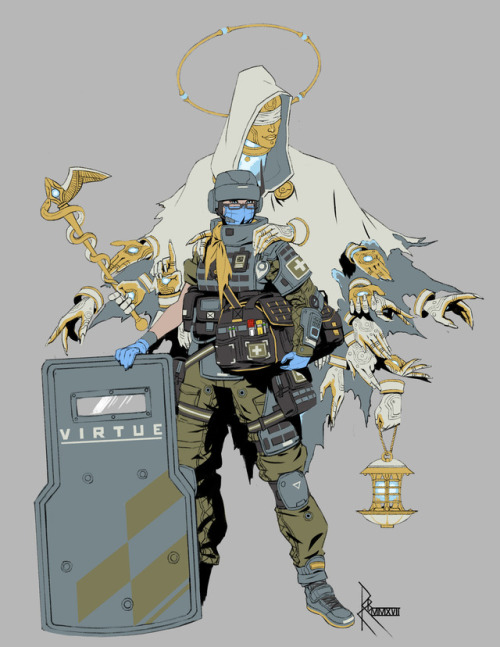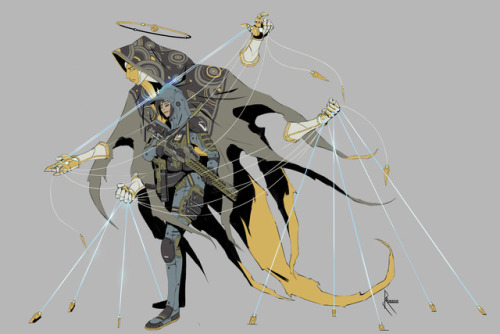Just An Experiment. Reblog If You Actually Give A Fuck About Male Victims Of Domestic Violence And Rape.
Just an experiment. Reblog if you actually give a fuck about male victims of domestic violence and rape.
Of fucking course
What sick bastard doesn’t
More Posts from Madjix and Others








Agents of Virtue. Each agent is paired with an angel representing a virtue that helps them fulfill a specific role within their squad. Noble in their purpose and swift in their dealing of justice they maintain the balance between worlds.
1:Kindness, Powerful but frail magic user.
2: Humility. Stealth infiltrator/flanker
3: Charity. Support healer.
4: Chastity. CQC specialist.
5:Temperance. Strategists able to fill multiple roles.
6: Patience. DMR trapper/zone controller.
7: Diligence. Heavy support tank.
REBLOG IF YOU'RE AN ARTIST!!!
Professional or not, no matter what art style, I wanna see how many artists are out there.
Yup. Needed to read this.
If you're a creator and you needed to hear this today:
You have no idea how many people lurk on your work. No idea how many times people go back to revisit your work. How big they smile when they simply think about your work. How fast their heart beats, how excited they get when they see that you posted something.
People are shy with their feedback. Sometimes it’s because they’re simply shy. Other times it’s because they assume you already know how great and talented you are. Could be both.
My point is, even if you barely have any likes or reblogs, don’t get discouraged. You have a lot of silent fans, but they are still your fans. Keep on creating. Because there is always someone out there who will love what you have made.






Saving this as a t-shirt for one of my characters

Do you ever look at your old art and just

How Magic works for the Kings
Welcome back, faithful readers! Mage: The Awakening Second Edition has spent the last four months being redlined with a fine-toothed comb, and is now back with the authors for a spruce-up before evolving into its final form. As second drafts come back in, I’ll be sharing the topics we didn’t get around to in the last phase of Open Development, such as Attainments (and I might split that up), the remaining five Order write-ups, Gnosis, matters of the Soul, and Mana.
Now, the previous blogs have described a lot of how we’re changing Mage, but today’s topic is something that we’ve gone into the new edition not only wanting to keep, but raise in prominence. Awakening, like its big brother Ascension and both games’ estranged uncle Ars Magica, is different to all the other World of Darkness games in how it treats characters’ powers. A Mage character sheet doesn’t list individual powers like Werewolf Gifts or Demon Exploits. Its powers aren’t progressive lists like Vampire Disciplines. The Arcana list many example spells, but they are examples. The game’s big draw, like its predecessors’, is the ability to come up with thousands of spells and place them within the framework provided by the mechanics.
In the current edition, creative thaumaturgy came after the example spell lists, giving some readers (especially those just flipping through the book) the impression that Awakening discourages inventive magic use compared to Ascension, but that certainly wasn’t the intent and one of our main goals in the new edition is to dispel that notion. What we do have to work with is the new World of Darkness’ generally tighter mechanics – it’s easy to describe what you want to do, but how to translate that into a game effect gives a lot of people difficulties. What dot-level should a spell be? How much damage is appropriate? When should you give bonus dice to actions, or dice tricks? When should you use a Condition, and how “big” can spells get?
In-between the Yantra section and the Arcana (with their attendant lists of spells), Awakening Second Edition offers advice on Creative Thaumaturgy and how to design new spells, written by the Arcana Team alongside all of the spells they designed and redesigned for the game.
It breaks spells down into a five-step process, which assumes the spell is using the full rules rather than Down and Dirty magic, which only uses steps one and two:
Step One: Declare Intent
As Emmet show in this clip, this can be the hardest part of the process, especially for a player. It comes with practice, and in taking the example spells as a starting point rather than an exhaustive list – think of something similar to an existing spell but not quite covered? That can be your basis. A minority of players all but abandon the described spells and think only in terms of the Practices, and it’s this method that I recommend to people joining us from Ascension. Most players will be somewhere in-between.
Step Two: Determine Arcanum and Practice
The ten Arcana list various phenomena as being under their purviews, but like the spells those aren’t strictly speaking exhaustive. If you can think of something we haven’t, put it into one of them. Second edition clarifies a few things in terms of the Arcana’s dividing lines – Death is very clearly the “magic that affects the Soul” Arcanum now, rather than sharing it with spirit, Prime is “truths” not “illusions”, as purely sensory illusions are Forces now. Before each Arcanum goes into the example spells, they also give any special notes and advice on how their purviews work; I have personally noted (often firsthand) a great number of players and storytellers not “getting” how time – the dimension, not the Arcnum – works in Awakening and struggling with improvised spells. That was because principles like “the past is fixed unless altered by magic, the future is constantly changing according to probability (which is itself a function of Fate)” and “if you kill your grandfather you don’t blink out of existence, but everyone will forget who you were” were built into 1st ed’s spells but left to inference. Second edition flat-out tells you about it, and about how Fate interacts with destiny, and how magical sympathy and contagion work with Space.
The Practices are the skeleton behind the Arcana system – thirteen categories for spells (with a few more as the secret business of Archmasters) that every spell falls into. One of the happy results of the new edition’s Reach system for Paradox is that we have none of the warping of Practices relative to their dot-ratings first edition had, and we’ve extended that by removing the “offsets” some Arcana had for different types of subject: Every single Fraying spell is three dots, and Life no longer requires higher dots to cast on animals than plants. Game balance (such as it is) is administered through Reach, instead – if you can imagine two versions of the same spell in the same Practice, and one is obviously more powerful than the other, our advice is to make the more powerful one a Reach effect on the less powerful one. Because the Practices are now hard-locked to their dot ratings, they’re much improved as the means for a Storyteller to figure out what dot-rating a spell needs to be.
Initiate (•)
Compelling spells nudge something into doing something it could have done naturally. A coin toss can be made to come up tails (Fate), a bored worker can be made to take that coffee break now (Mind), or a spirit can be forced to avoid its bane (Spirit). Making the coin hover and spin in midair, making the worker walk into her boss’s office and quit, or making the spirit ignore its favorite prey are beyond the bounds of a Compelling spell.
Knowing spells deliver knowledge about something directly to the mage (or to another target). A mage can divine the cause of a corpse’s death (Death), sense whether someone has a powerful destiny (Fate), or unerringly know which way is north (Space.) This knowledge is a direct awareness of Supernal truth; the mage doesn’t have to interpret evidence based on her senses or try to divine the truth out of cryptic riddles.
Unveiling spells expose hidden things to the mage’s senses, or expand the confines of those senses. She might gain the ability to hear radio waves (Forces), peer across the Gauntlet or perceive things in Twilight (Spirit), or see the flow of Mana across the landscape (Prime).
Apprentice (••)
Ruling spells grant fuller control over phenomena than a mere Compelling spell. Water can be made to flow uphill or into unnatural shapes (Matter), animals (or even human beings) can be commanded (Life or Mind), or time can be momentarily made to accelerate or slow down (Time). A Ruling spell can’t fundamentally alter its subject’s abilities: Water can be directed, but not turned solid or gaseous. Time can be altered, but not overwritten. An animal can be commanded, but not made stronger or fiercer.
Shielding spells, sometimes called Warding spells, offer protection against phenomena under the Arcanum’s purview. A Shielding spell might protect against a ghost’s Numina (Death), make the mage immune to fire (Forces) or disease (Life), or allow her to survive in a caustic atmosphere (Matter). Mages protect themselves from general harm through the power of their Arcana with the Mage Armor Attainment rather than Shielding spells.
Veiling spells are twofold: Firstly, they can conceal things under the Arcanum’s purview from detection: A subject can be made to lose all sense of time (Time), a fire’s heat and light can be hidden from view (Forces), or making a building all but impossible to notice (Matter). Secondly, they can conceal a subject from concrete phenomena under the Arcanum’s purview: a mage can render herself invisible to ghosts (Death) or ward a powerful Locus from detection by spirits (Spirit) or walk unnoticed through a crowd (Life or Mind) or past a camera (Forces). Short of archmastery, it’s impossible to Veil something against an abstract concept or force: a mage can’t Veil herself against death or hide from time, for example.
Disciple (•••)
Fraying spells degrade things, weakening them and enhancing their flaws. Fraying spells can weaken subjects under the Arcanum’s purview: damping a fire (Forces), sapping Strength (Life), or eroding the barrier between worlds (Death, Spirit, or others, depending on the worlds in question). They can also directly attack subjects using the energies of the Arcanum: inflicting damage via the chill of the grave (Death), or psychic overload (Mind). Damage inflicted by a direct-attack Fraying spell is always bashing.
Perfecting spells are the opposite of Fraying spells in many ways: they bolster, strengthen, and improve rather than weakening and eroding. A Perfecting spell might repair damage to an object or a person (Matter or Life), allow a machine to function perfectly, with no wear and tear (Matter), or make a modest destiny into an earth-shaking one (Fate).
Weaving spells can alter nearly any property of a subject without transforming it into something completely different. Solid steel can be transmuted to liquid (Matter), a sword can be enchanted to damage beings in Twilight (Death or Spirit), or a few seconds of time can be rewritten (Time). A spell that grants the target the properties of something that falls within the Purview of another Arcanum, like giving someone diamond-hard skin (Life and Matter), requires a mage to know the Practice of Weaving for both Arcana.
Adept (••••)
Patterning spells allow a mage to completely transform a target into something else that falls under the Arcanum’s purview. A memory can be replaced wholesale (Mind), the mage can turn herself (or a subject) into an animal (Life), or she can teleport by “rewriting” her own location (Space). A spell that transforms the subject into something that falls within the Purview of another Arcanum, like transforming into a living pillar of fire (Life and Forces), requires a mage to know the Practice of Patterning for both Arcana.
Unravelling spells can significantly impair or damage phenomena under the Arcanum’s purview, or directly inflict severe damage using the forces of an Arcanum. A raging storm might become a calm summer’s day (Forces), solid iron reduced to dust (Matter), even spells can be torn asunder (Prime). Mages can hurl fire (Forces) at their enemies, or cause aneurysms and heart attacks with a glance (Mind or Life) Damage inflicted by a direct Unravelling attacks is lethal, but can be upgraded to aggravated by spending a point of Mana and one Reach.
Master (•••••)
Making spells allow for the creation of whole new phenomena ex nihilo. The mage can conjure gamma rays (Forces), birth new spirits (Spirit), or create a doorway to the Underworld (Death). Time can be dilated by creating more seconds, hours, or even days (Time).
Unmaking spells annihilate subjects under the Arcanum’s purview entirely. Life can be snuffed life a candle (Life), two locations can be forced into each other by destroying the distance between them (Space), even Hallows and Verges can be wiped from the earth (Prime). Unmaking spells are beyond inflicting direct damage with attacks; a successful Unmaking destroys the subject altogether.
Astute players will likely figure out a multitude of ways to accomplish similar effects with different Arcana, sometimes at different dot levels. This is okay. Just because a Fate ••• spell can do a thing doesn’t mean a Forces • spell that does a similar thing is “broken” or should be disallowed.
Take for example influencing the outcome of a coin toss. A simple Compelling spell of Fate can easily tip the odds toward either heads or tails, but it’s theoretically possible to use a Forces Fraying spell to alter the kinetic energy imparted to the coin, causing it to spin slower, or use a Matter Weaving spell to change the coin’s center of mass. Both are perhaps more complicated than the Fate approach, but they’re valid within the purview of their respective Arcana. Similarly, a Mind Weaving spell could force a target to feel love, while a Life Ruling spell could cause the target’s brain to release dopamine and other hormones that create a similar effect.
Step Three: Determine Effect and Cost
The effects of a spell can be incredibly broad, and it’s impossible to categorize every conceivable thing a mage might want to do with a spell, but this section will highlight some of the more common effects, how to adjudicate them, and what they should cost. We go through Damage, Healing, Conditions and Tilts, Bonuses and Penalties, Dice Effects, Protection, Hiding, and Narrative Effects.
Don’t think of this section as a “menu;” any individual spell should have a single, clear effect. If you start designing a spell that deals damage and grants bonus dice and imposes a Condition, you’re probably creating a combined spell (see p. XX), not a single spell.
I’m not going to give you the whole thing in this blog, but here’s an example:
Conditions & Tilts
As pre-packaged blocks of rules already designed to fit into a lot of different systems, Conditions are an excellent source of inspiration for long-lasting spells.
Because the effects of Conditions and Tilts are so broad, it’s difficult to assign hard-and-fast rules for Practices that inflict them. Use the Practice descriptions and the following list as a guideline:
Compelling (•) spells can’t create Conditions out of whole cloth, but can intensify phenomena that already exist to inflict Conditions. A Compelling spell can make someone who’s already nervous Spooked, for example, but can’t make someone who’s uninterested in the mage romantically Swooning.
Ruling (••) spells can create most non-Persistent, mundane Conditions. Supernatural Conditions, such as the soul loss Conditions or Manifestation Conditions, generally require a Weaving (•••) spell.
Creating a Persistent Condition is almost always a Patterning (••••) or Unraveling (••••) effect.
Spells inflict Conditions that harm, hinder, or inconvenience characters. Wholly beneficial Conditions, like Informed or Steadfast, should be saved for the benefits of rolling an exceptional success on the spellcasting roll. Spells can mimic the effects of a helpful Condition, but using magic to gain a benefit and a Beat is double-dipping.
Tilts are usually created by applying a Reach to an attack spell, but if you want to create one on its own, it’s usually a Fraying (•••) or Patterning (•••) spell.
Conditions created with magic only last as long as the Duration factor of the spell. If the target resolves the Condition before the Duration expires, the spell ends early and the target gains a Beat as normal. (It’s the Storyteller’s call whether the Beat is normal or Arcane.) If the Duration runs out, the Condition goes away, but that doesn’t count as resolving the Condition.
Removing a condition with magic is always at least a Ruling (••) spell, but otherwise follows the same guidelines as creating one.
The Beat Goes On…
At this point, you may be wondering what’s stopping you from loading up on Condition-causing spells in a relatively safe environment, resolving them all, and earning Beats by the bucketload? The honest answer is “nothing, mages do it all the time.” Mastigos force their apprentices to face terrifying fears in order to better themselves. Thyrsus challenge their own bodies with horrible diseases. The only limits are the rule that a character may only earn one Beat per scene from resolving Conditions, and the limits of her own Wisdom (see p. XX). Remember, though, that letting a Condition-causing spell’s Duration expire doesn’t count as resolving the Condition.
Costs
When designing the corebook’s spells, we had lists of what would definitely require Reach, Mana, or both – and we give both lists here. They’re less important in Creative Thaumaturgy terms than in actual spellcasting – most Reach is spent to manipulate spell factors, and most Mana is spent on Attainments or to mitigate Paradox – but when some spell effects do require one or the other, we tell you.
Step Four: Decide Primary Factor
Determine which Factor is the Primary Factor – the one that starts at the mage’s Arcana dots in levels before penalties, while all the others begin at the first level. This is almost always Potency, or Duration, but the rule of thumb is “whichever Factor you immediately think of when you think of a more powerful version of the spell.” The Primary Factor can be changed during spellcasting with a Reach. The Primary Factor of a given spell effect is always the same; you can’t make a creative thaumaturgy spell that’s identical to another spell except with a different Primary Factor.
Step Five: Cast the Spell
And then cast away!
When designing new spells, it’s important to remember how the spellcasting system works – never assume what the spell will be cast on, for example, because that’s a function of the Spell Factors. First edition had lots of spells that required touch range, or needed extra dots to cast on someone else, or stipulated that they were always Aimed; second edition does none of that, as those things are all handled by the business of your spell and Paradox dice pools.
How do the spell factors work? That’s a subject for another blog.
I hope that all re-whetted your appetite for Mage previews. More to come as soon as possible.
Until then!
-
 diva-caoimhe reblogged this · 2 days ago
diva-caoimhe reblogged this · 2 days ago -
 natqwp reblogged this · 2 days ago
natqwp reblogged this · 2 days ago -
 natqwp liked this · 2 days ago
natqwp liked this · 2 days ago -
 corvusfrugilegus-rook reblogged this · 2 days ago
corvusfrugilegus-rook reblogged this · 2 days ago -
 mythicmintybreeze reblogged this · 2 days ago
mythicmintybreeze reblogged this · 2 days ago -
 justasensitiveplant liked this · 2 days ago
justasensitiveplant liked this · 2 days ago -
 samcat71470558 liked this · 2 days ago
samcat71470558 liked this · 2 days ago -
 samcat71470558 reblogged this · 2 days ago
samcat71470558 reblogged this · 2 days ago -
 allpinewood reblogged this · 2 days ago
allpinewood reblogged this · 2 days ago -
 clawsdraws reblogged this · 3 days ago
clawsdraws reblogged this · 3 days ago -
 cchidorinagashii liked this · 4 days ago
cchidorinagashii liked this · 4 days ago -
 k9kennelemojis reblogged this · 4 days ago
k9kennelemojis reblogged this · 4 days ago -
 kindagaycanofsoup liked this · 5 days ago
kindagaycanofsoup liked this · 5 days ago -
 kindagaycanofsoup reblogged this · 5 days ago
kindagaycanofsoup reblogged this · 5 days ago -
 1800oxycodone reblogged this · 5 days ago
1800oxycodone reblogged this · 5 days ago -
 1800oxycodone liked this · 5 days ago
1800oxycodone liked this · 5 days ago -
 theoldtentacledgods liked this · 5 days ago
theoldtentacledgods liked this · 5 days ago -
 error84744838 liked this · 5 days ago
error84744838 liked this · 5 days ago -
 hattiefunny reblogged this · 5 days ago
hattiefunny reblogged this · 5 days ago -
 lycosawitch reblogged this · 5 days ago
lycosawitch reblogged this · 5 days ago -
 spikyballofhades reblogged this · 5 days ago
spikyballofhades reblogged this · 5 days ago -
 spikyballofhades liked this · 5 days ago
spikyballofhades liked this · 5 days ago -
 herdsystem reblogged this · 5 days ago
herdsystem reblogged this · 5 days ago -
 herdsystem liked this · 5 days ago
herdsystem liked this · 5 days ago -
 multishipping-truther reblogged this · 5 days ago
multishipping-truther reblogged this · 5 days ago -
 multishipping-truther reblogged this · 5 days ago
multishipping-truther reblogged this · 5 days ago -
 multishipping-truther reblogged this · 5 days ago
multishipping-truther reblogged this · 5 days ago -
 yangxiaolongstan reblogged this · 5 days ago
yangxiaolongstan reblogged this · 5 days ago -
 yangxiaolongstan liked this · 5 days ago
yangxiaolongstan liked this · 5 days ago -
 devotedgnome liked this · 6 days ago
devotedgnome liked this · 6 days ago -
 ghastlyconscious reblogged this · 6 days ago
ghastlyconscious reblogged this · 6 days ago -
 baddiefromnyc reblogged this · 6 days ago
baddiefromnyc reblogged this · 6 days ago -
 baddiefromnyc liked this · 6 days ago
baddiefromnyc liked this · 6 days ago -
 stewsmeil liked this · 6 days ago
stewsmeil liked this · 6 days ago -
 9sealsinaballgown liked this · 6 days ago
9sealsinaballgown liked this · 6 days ago -
 recentlydiseased reblogged this · 1 week ago
recentlydiseased reblogged this · 1 week ago -
 recentlydiseased liked this · 1 week ago
recentlydiseased liked this · 1 week ago -
 iwriteiguessandiloveit reblogged this · 1 week ago
iwriteiguessandiloveit reblogged this · 1 week ago -
 our-cool-jenny reblogged this · 1 week ago
our-cool-jenny reblogged this · 1 week ago -
 cyb3rrkn1ghtt reblogged this · 1 week ago
cyb3rrkn1ghtt reblogged this · 1 week ago -
 cyb3rrkn1ghtt liked this · 1 week ago
cyb3rrkn1ghtt liked this · 1 week ago -
 isowizard-handler-of-suggestions reblogged this · 1 week ago
isowizard-handler-of-suggestions reblogged this · 1 week ago -
 ummmuhhidk liked this · 1 week ago
ummmuhhidk liked this · 1 week ago -
 a-random-british-top-hat liked this · 1 week ago
a-random-british-top-hat liked this · 1 week ago -
 planetlongjourney reblogged this · 1 week ago
planetlongjourney reblogged this · 1 week ago -
 mythikade reblogged this · 1 week ago
mythikade reblogged this · 1 week ago -
 helluvatrek reblogged this · 1 week ago
helluvatrek reblogged this · 1 week ago -
 helluvatrek liked this · 1 week ago
helluvatrek liked this · 1 week ago -
 asillylittlecreature reblogged this · 1 week ago
asillylittlecreature reblogged this · 1 week ago
An Artist's blog for at least one of my ongoing stories. Armory, Managerie, and Libraries galore! (18+ NSFW, Gay-themed, Urban/Modern Fantasy shtuff!
61 posts


